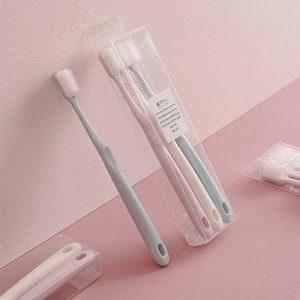Human ancestors had the habit of gargle and brushing teeth. In 3000 BC, the first tool for cleaning the mouth was found in the tomb of the king of Ur city-state of Sumer. One can last for two weeks. In ancient Greece and Rome, people used animal ashes as tooth powder to clean their mouths, and some primitive tribes used charcoal, salt water, fine sand, and branches to clean their teeth. Mash one end and make it into a brush shape, which is used to clean between teeth and brush your teeth. It is called Miswak. It is a natural toothbrush. According to scientists, this branch contains fluoride and saponin, which can prevent tooth decay and have analgesic effect. .
The Chinese have understood the importance of protecting teeth more than 2,000 years ago. The “Historical Records · Cang Gong Zhuan” stated that the cause of dental caries was “eating without gargle”. In “Book of Rites”: “The chicken cries salty and coughs” shows that people have the habit of gargle. The ancients cleaned the mouth and teeth with fingers and willow branches. In the Dunhuang fresco “Sacred Picture of the Fork Head at Laodu”, there is a monk squatting on the ground, holding a mouthwash bottle in his left hand, and wiping his front teeth with his right middle finger. In the Tang Dynasty, people used willow branches to make toothbrushes and dipped them in liquid medicine to wipe their teeth. In the Song Dynasty, some people advocated using willow branches to wipe the teeth twice a day in the morning and evening. The term “toothbrush” was officially used in the Yuan Dynasty. Guo Yu’s poem said: “Nanzhou toothbrushes are worth a gold for the first day of cleaning.” The characters use toothbrushes, and most people still use willow branches and toothbrush powder made from Chinese herbal medicine. According to archaeological findings, two toothbrush handles made of bone were unearthed in an ancient tomb of the Liao Dynasty in my country more than 1,000 years ago.








